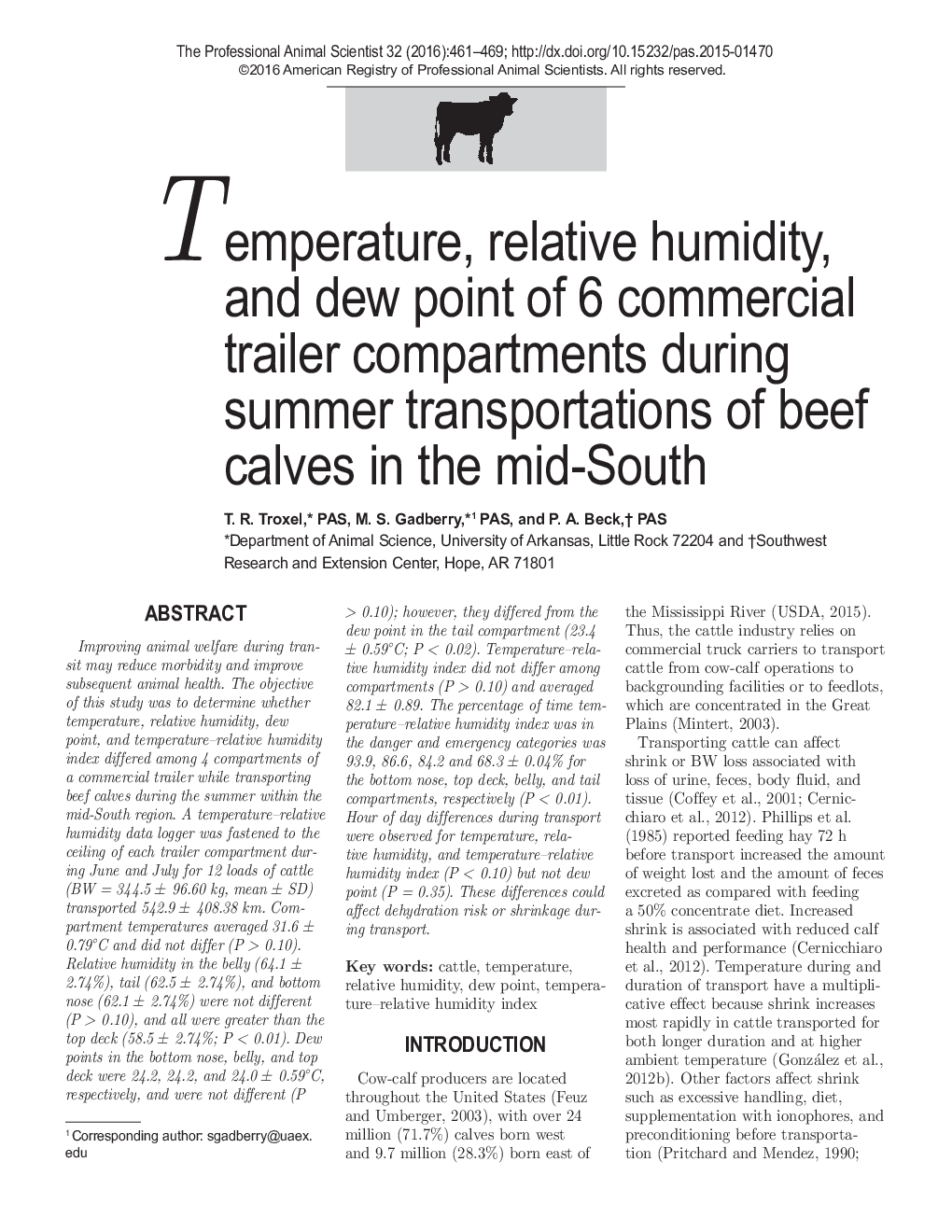| Article ID | Journal | Published Year | Pages | File Type |
|---|---|---|---|---|
| 8503854 | The Professional Animal Scientist | 2016 | 9 Pages |
Abstract
Improving animal welfare during transit may reduce morbidity and improve subsequent animal health. The objective of this study was to determine whether temperature, relative humidity, dew point, and temperature-relative humidity index differed among 4 compartments of a commercial trailer while transporting beef calves during the summer within the mid-South region. A temperature-relative humidity data logger was fastened to the ceiling of each trailer compartment during June and July for 12 loads of cattle (BW = 344.5 ± 96.60 kg, mean ± SD) transported 542.9 ± 408.38 km. Compartment temperatures averaged 31.6 ± 0.79°C and did not differ (P > 0.10). Relative humidity in the belly (64.1 ± 2.74%), tail (62.5 ± 2.74%), and bottom nose (62.1 ± 2.74%) were not different (P > 0.10), and all were greater than the top deck (58.5 ± 2.74%; P < 0.01). Dew points in the bottom nose, belly, and top deck were 24.2, 24.2, and 24.0 ± 0.59°C, respectively, and were not different (P > 0.10); however, they differed from the dew point in the tail compartment (23.4 ± 0.59°C; P < 0.02). Temperature-relative humidity index did not differ among compartments (P > 0.10) and averaged 82.1 ± 0.89. The percentage of time temperature-relative humidity index was in the danger and emergency categories was 93.9, 86.6, 84.2 and 68.3 ± 0.04% for the bottom nose, top deck, belly, and tail compartments, respectively (P < 0.01). Hour of day differences during transport were observed for temperature, relative humidity, and temperature-relative humidity index (P < 0.10) but not dew point (P = 0.35). These differences could affect dehydration risk or shrinkage during transport.
Related Topics
Life Sciences
Agricultural and Biological Sciences
Animal Science and Zoology
Authors
T.R. PAS, M.S. PAS, P.A. PAS,
